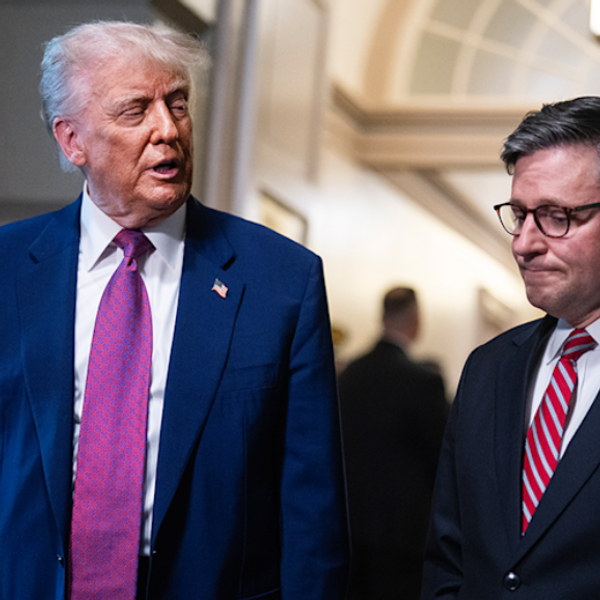Intelligence Gap Poses Major Challenges In U.S.-Led Air War Against Islamic State

By Brian Bennett, Tribune Washington Bureau (TNS)
WASHINGTON — In mid-September, as the U.S. military prepared to launch cruise missiles against Islamic State militants in Syria for the first time, CIA analysts lobbied to expand the target list to include eight possible locations for leaders of a band of battle-hardened al-Qaida operatives moving between towns west of Aleppo.
The previously obscure Khorasan Group, believed to be led by a 33-year-old Kuwaiti named Muhsin Fadhli, was getting closer to being able to execute a terrorist attack on a passenger jet by concealing explosives in clothing or cellphones, the analysts feared. Fadhli reportedly moved to Syria last year to recruit European militants to launch terrorist strikes in the West.
Intelligence officials in Washington also worried that the group’s leaders would stop using phones and other traceable devices once the bombing began. If they didn’t hit the tight-knit cell — and Fadhli in particular — in the initial wave of airstrikes, the CIA analysts argued, they didn’t know when they’d get another chance.
The CIA prevailed, and the analysts believed Fadhli was visiting one of the compounds in northwestern Syria that was pulverized in the opening salvo of 47 Tomahawks on Sept. 23. Early communications intercepts gave the CIA hope he had been killed.
But nearly two months later, U.S. spy agencies have not been able to confirm Fadhli’s death, according to two U.S. officials briefed on the operation. The intelligence gap reflects far broader problems for the expanding U.S.-led air war against the heavily armed Islamic State fighters and others considered terrorists who have captured large parts of Syria and Iraq.
“It’s a black hole,” one U.S. official said, speaking on condition of anonymity in discussing intelligence, on the challenge of tracking terrorists and assessing casualties in a war zone that is in effect off-limits to U.S. personnel.
U.S. counterterrorism officials have identified about a dozen Americans fighting with militants in Syria or Iraq, for example, including some who have joined the Islamic State. But U.S. intelligence analysts have struggled to develop a complete picture of their movements or what roles they play in the militant groups.
U.S. intelligence agencies have poured resources into the war since the spring, and the CIA has set up a training camp in Jordan for Syrian fighters. They also rely on information gathered from U.S.-backed rebel groups, including the Free Syrian Army.
The White House now is considering expanding the CIA’s role in arming and training fighters deemed friendly, The Washington Post reported Saturday. The clandestine operation now vets and trains about 400 fighters a month, but the CIA-backed factions have struggled to take and hold territory. In one recent battle, they fled positions in a battle with the Nusra Front, abandoning their weapons to the group, which is al-Qaida’s affiliate in Syria.
So far, U.S. aircraft have launched at least three raids on targets associated with the Khorasan Group. U.S. officials say the network operates in coordination with the Nusra Front and poses a direct terrorist threat to the United States and its allies, although some counterterrorism experts in the region question that analysis.
How successful the raids were remains an open question.
In the second attack, on Nov. 7, a U.S. drone fired a missile at a vehicle in Syria’s Idlib province. The intended target was French-born militant David Drugeon, a 24-year-old convert to Islam who is believed to be a skilled bomb maker operating with the Khorasan Group.
Early intelligence reports indicated that Drugeon may have been killed in the strike. But analysts are still working to confirm his death.
“We’d like for him to be dead,” a U.S. official said.
American officials similarly had their hopes raised when Iraqi state television reported last week that airstrikes in northern Iraq had killed or severely wounded Abu Bakr al-Baghdadi, the self-proclaimed caliph of Islamic State.
But a 16-minute voice recording released Thursday by the group appeared to contradict those reports. Al-Baghdadi sounded very much alive as he boasted that his network was expanding to include militant groups in Yemen, Egypt, Libya, and Algeria.
U.S. intelligence relies heavily on information gleaned from intercepted telephone conversations, text messages, email, and Internet communications.
Spy plane and satellite images can help analysts estimate how many were killed in a missile blast and, in some cases, those in attendance, but they cannot identify specifically who died.
Without the ability to go into a rebel-held area and collect tissue samples for DNA analysis after an airstrike, U.S. intelligence must use reports from local informants and allied forces in the area.
“Having an American spotter in the bulrushes when the building is blown up, he comes in and takes a chunk of hand — that’s the gold standard” for confirming who was killed in an airstrike, said a senior intelligence official who has extensive experience in tracking terrorist organizations, speaking in an interview.
“Sometimes the liaisons bring in a hand,” the official said. Without tissue samples, intelligence analysts must rely on “lesser” pieces of evidence such as monitoring a beacon hidden on a target’s car that shows it arriving at a location, or a Predator drone seeing the target enter the building but not exiting after the strike.
The lack of reliable intelligence in Iraq is especially frustrating for the CIA given that the agency built a massive spying operation after the 2003 U.S.-led invasion and during the eight-year war that followed.
But the agency closed most of its satellite posts and withdrew much of its staff when U.S. troops were pulled out at the end of 2011, leaving little direct intelligence from Anbar province and other areas where Islamic State now has established control.
U.S. intelligence hasn’t had a robust covert presence in Syria since the civil war erupted there more than three years ago, officials said. It is heavily reliant on the intelligence services of Arab allies in the region for information on the shifting front lines and deadly mix of militant groups.
“We lack good intelligence resources on the ground and we don’t have good resources of human intelligence,” said Rep. Adam B. Schiff, D-Calif., a member of the House Intelligence Committee.
The militants already have learned to use counterintelligence techniques. In intercepted communications, Schiff said, intelligence analysts guard for both deliberately misleading claims and mistaken claims that people have been killed.
“Even if you have a credible intercept, they could be deliberately trying to deceive you and sometimes they do,” he said.
Bruce Hoffman, a terrorism expert at Georgetown University, said a closer relationship with rebel groups in Syria would allow the CIA to develop a deeper network of informants.
“We just don’t have the assets on the ground — that would have been one advantage of arming the Syrian moderates two years ago,” he said. “Syria is such a fluid environment, it would be very difficult to develop assets now.”
MCT Photo/Raja Abdulrahim/Los Angeles Times
Interested in more political news and analysis? Sign up for our daily email newsletter.








